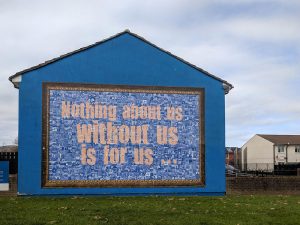Below is an interview with Elaine Johnson, director of the National Training Institute for Community Youth Work, an organization founded by the Academy for Educational Development (AED) in 1997 to strengthen the field of youth development through the professional development of youth workers. AED is a nonprofit organization committed to solving critical social problems in the U.S. and throughout the world—major areas of focus include health, education, youth development, and the environment. For more information, please visit the Web site (nti.aed.org).
A 1992 report from the Carnegie Council on Adolescent Development, A Matter of Time: Risk & Opportunity in the Nonschool Hours, ignited a national dialogue for the need to shift how our country addressed youth problems. The report found that young people were at risk of participating in harmful activities when their non-school hours were void of meaningful relationships with adults and peers. The report concluded that communities needed to create safe places offering skill development and opportunities for youth to be engaged in community and family.
Researchers Karen Pittman and Michele Cahill advanced this understanding further by suggesting that every program and institution serving youth needs to invest in promoting youth development in order to ensure all young people use non-school hours to engage in healthy growth activities. Since then, others have pushed the concept further, advocating that all public serving institutions make it their business to develop youth by involving them in meaningful opportunities, including governance activities.
Because our intentions were so profound and so far-reaching, advocates of youth development had to build a movement guided by a cohesive practice principle. Without a coordinated, comprehensive system and long-term investments, the developmental needs of young people would not be addressed. Leaders in the youth-serving sector began dialogues to mobilize and “build a field of youth development” with recognized competencies that required training and education for staff and volunteers working with youth. And this youth development field had to shift our country’s policies.
As part of an effort to build such a field of practice, I have been leading the National BEST (Building Exemplary Systems for
Training Youth Workers) Initiative whose purpose is to train youth workers—the adults who work with adolescents—all across the country in youth development principles. We’ve done this through contracting with various kinds of institutions to provide training in the Advancing Youth Development curriculum. Some were organizations deeply passionate about youth development, some were human service training organizations and some were institutions of higher learning.
We found training worked best when the community of practitioners cared about and promoted the bigger picture of youth development—they focused not just on their narrow neighborhood or service program but rather asked what did this new perspective mean for their work across organizational or political boundaries. We also learned that if the organizations or groups realized they needed additional training, let’s say in planning or project management skills—or any kind of training that was beyond our program—the BEST initiative provided an infrastructure to access or create that training.
Within the nonprofit sector, youth development also enables leadership succession and competent decision-making. The challenge is to connect and get commitments from every nonprofit organization to work toward the same developmental goals for young people. If we are successful at this, all nonprofit organizational decisions would be guided by the answers to such questions as: Do we know that we are building competent and caring youth through their participation in our organizations? Is this decision going to support the development of our youth? How can youth help us answer these questions?
Nonprofit organizations that want to begin connecting with the goals of the youth development field will need to embark on an organizational change process. These changes include: first, revising the organization’s mission and goals to reflect a belief in the goals and principles of youth development, second, establishing organizational practices and policies that exemplify youth development principles, third, participating in and supporting community efforts that support youth and youth development, and finally, establishing collaborative relationships with organizations in the youth development field. This organizational change work should be guided by these questions:
• How can we engage youth in helping us to think about and implement our organizational changes in support of youth development?
• Who on my staff would be willing to get the knowledge and training in order to work with youth using the youth development approach?
• How can we design and market our programs to attract young people?
Sign up for our free newsletters
Subscribe to NPQ's newsletters to have our top stories delivered directly to your inbox.
By signing up, you agree to our privacy policy and terms of use, and to receive messages from NPQ and our partners.
An organization interested in exploring how to value and engage youth will benefit from a facilitated process because conversations about having young people involved in the organization may require help with consensus building, conflict resolution, or conflict negotiation.
Having an organization realize that youth should be involved in the process is about incremental change and not a revolution. This change process often begins with a dialogue within the organization about youth. If youth are a priority and valued, then organizations should start with their organization’s mission or principles and incorporate in them a commitment to youth. Have the board adopt youth development principles for the organization, take actions around consensus building, and then begin some specific programming. Some youth development leaders would advise trying to identify young people to be engaged in the process from the beginning. If the organization isn’t prepared to get youth involved yet, it is still possible to move forward with the process. Remember, it’s about organizational change, and it takes time.
A decision to have young people contribute to the organization’s goals requires training for both youth and adults. For example, if you want young people to be on your board they will need to be trained in financial literacy skills so that they can engage in the conversations. An organization has to think about what rules and policies exist that are a barrier to youth participation. The adults need training in how to support youth in these new learning experiences.
What Do You Imagine for the Future?
To infuse the will and principles of youth development into other nonprofits we will have to develop opportunities for further dialogue, especially during convening times like conferences and roundtables when large parts of the sector gather. We will have to stay in close touch with frontline youth workers so that we know what works and what doesn’t. We need to train staff throughout organizations and support good practice. And we will have to create the comprehensive strategies that make the case for and sustain youth involvement.
Imagine what youth would experience if the goals of youth development were aligned with the goals of other institutions—arts organizations, legal and human rights organizations, community development organizations, and so on. What might we experience as a society if we do this work as it should be done?
Elaine Johnson works with organizations to establish systems for the training and education of youth work professionals as well as provides trainings in youth development to organizations in the nonprofit sector.










